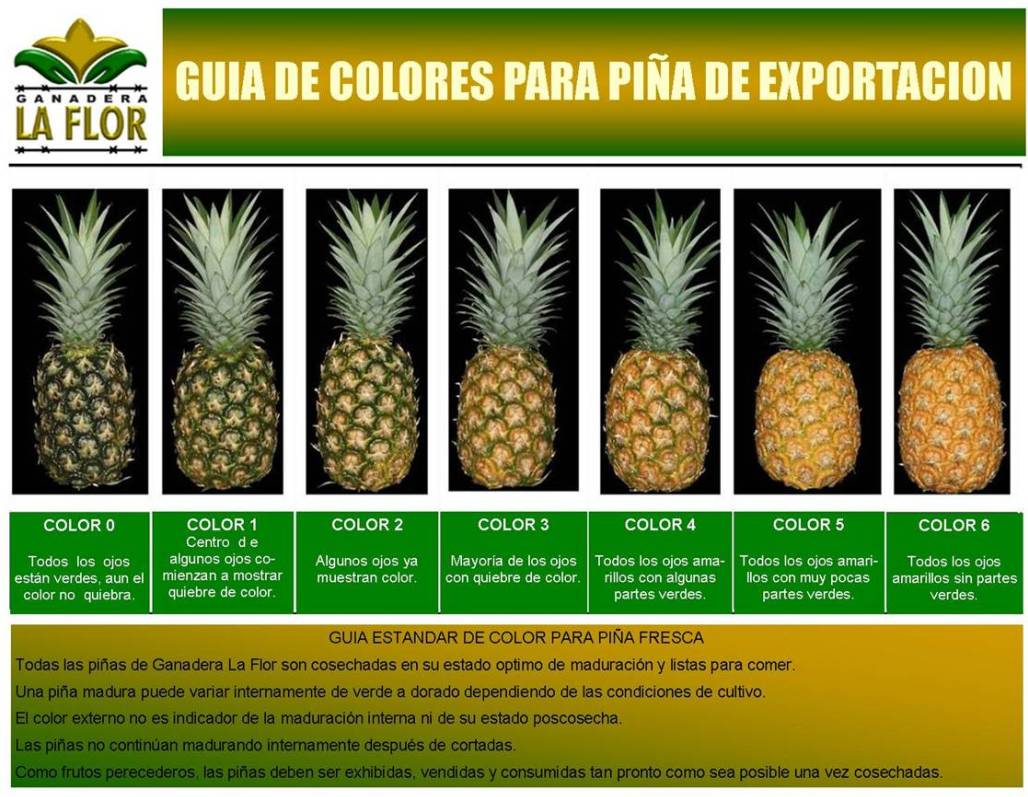|
Beautiful Pineapples FOB: Los Angeles, California Size: 5's, 6's & 7's Variety: MD2 BRIXo = >13 Origin: Costa Rica Importer: Produce1 For info: Earl @ 503-810-0101 https://produce1.com  |
How to Select a Pineapple: Pineapples that you see in your supermarket are living, breathing, entities just like you and me. They take in oxygen and give off carbon dioxide, heat and moisture. At the moment of harvest, the pineapple cells begin to die or enter into a state of senescence. Hence the pineapple is refrigerated to slow the senescence process. The harvesting of pineapples is based on sugar content of the fruit and not on shell color. Pineapple shell color is not necessarily a sign of maturity or ripeness. A pineapple may be ripe inside when the shell is practically all green outside. Always select the most recently harvested and therefore the freshest pineapple. Recently harvested pineapples have leaves that are erect and brightly colored and shells that are color 1 or 2. Pineapples with golden to brownish shells (with little or no green showing) and leaves that are loose and/or have dried brownish tips should be avoided. While an aged pineapple has lost moisture and thus may give the illusion of sweetness, it may have developed off-flavors. Such pineapples are senescent. The pineapple is a non-climacteric fruit, hence the sugar content of the pineapple is set at the point of harvest and does not increase. After harvest, pineapples do not continue to ripen. Pineapples should be harvested at 13-14% sugar. The base of the pineapple is much sweeter than the area near the leaves. The pineapple's golden shades of color (which results from the loss of chlorophyll in the bracts and sepals which compose the shell) develop under room temperature conditions. If a 4.0 color pineapple is preferred, simply move the pineapple to room temperature storage conditions (>72oF) for one or more days. When placed near ethylene gas sources such as apples, cantaloupes, pears, avocados, or ripe tomatoes the pineapple loses chlorophyll in the surface tissue more rapidly. Some may opt to place the pineapple in a paper bag along with slices of apple. Monitor the pineapple regularly for color change. When the pineapple color nears the desired shade, immediately move the pineapple to a cooler temperature (48o F). Holding pineapples at room temperature for a few days may reduce the shelf life. |
